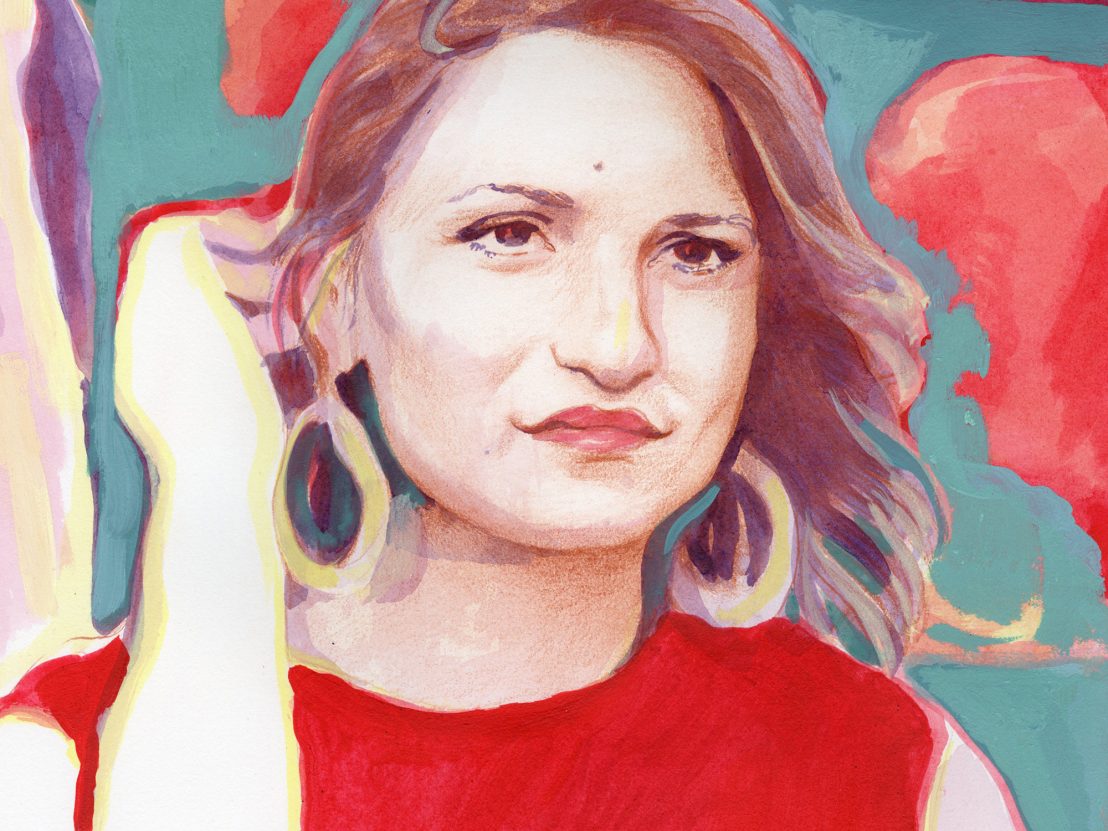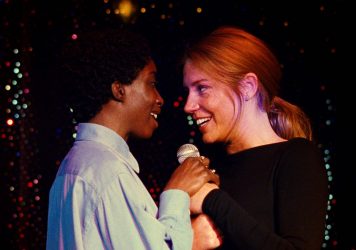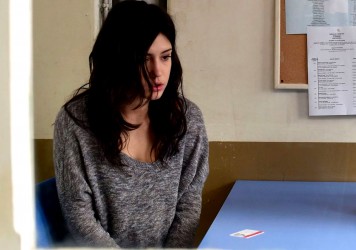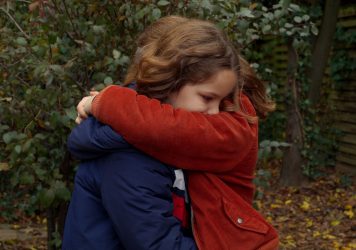
The director of olfactory wonder, The Five Devils, reflects on making a film about potions, memory and the sense of smell.
Léa Mysius’ bewitching second feature, The Five Devils, explores the frightening fallout of a family’s past as it collides with the present. It sees pensive, eight-year old Vicky (Sally Dramé) attempting to bottle the aroma of her mother, Joanne (Adèle Exarchopoulos), when mixing potions transports her into the past. Here, where only her mysterious aunt Julia (Swala Emati) can see her, Vicky begins to unravel the secrets that have haunted her family.
LWLies: Smell is one of the more challenging senses to translate for cinema – what was behind your desire to explore the sense of smell on screen?
Mysius: The idea was drawn from my own childhood when my twin sister and I used to make potions. When I wrote the script, I hadn’t thought of what a challenge it would be to capture this particular sense. I tried to film something invisible by starting with very concrete things, like little jars that have evocative colours and textures.
Things became more abstract as [the film] draws on memories. Ideas of gender, sexuality, and mixed-raced identity are central to The Five Devils. How did you navigate balancing that grounded realism with elements of fantasy and magic?
It is quite a baroque film but it had not hit me how rich it was in meaning. All those things you talk about in terms of issues of race, et cetera, for me, I wanted to film reality. From this realism came the fantastical elements. As a filmmaker, you’re always torn between these two things: on the one hand, you want to give this representation you believe should be absolutely normal, like women in same-sex relationships and Black people central in these stories. At the same time, you have to acknowledge the reality that there is racism and those issues exist. The fantastical elements of the film translate these issues.

The opening image of Joanne screaming into the fire is immediately powerful. Was this always the film’s introduction?
The first thing that came to me when I decided to write this film was the stark image of a young woman at night screaming in front of a fire. The second was a young girl who has a gift for smell and that sense can take her back into the past. Bringing the two together is what created the film’s scenario. Also, I was reading a psychoanalytic book by Pascal Quignard who describes this theory of the chaos and a primitive world that comes before the birth of a child. Before being brought into the world, every baby has this chaotic, savage, fire-fuelled vision that proceeds their entry. The film’s first image is a representation of this very primitive world.
In that way then, this film is your baby that begins with a vision of fire.
Well, in fact, we didn’t have anyone to scream in that scene at the end of filming. So, that scream you hear is my own.
The film’s depiction of a mother-daughter bond is very specific in its fluctuations – what was your intention there?
In this mother-daughter relationship, I didn’t want Joanne to be completely subsumed by her daughter. Adèle is a generous actor, she played with the kids and guided them, so I had to give her this image of a giraffe walking slowly but rigidly and around her is this little bird picking at her constantly, but she’s carrying on at the same pace. Of course, that does not mean there is no love between them. The distance causes Vicky to have this desperation to cling to her mother and anchor her in the real world because it feels like Joanne’s mind is elsewhere. The image I gave her to reproduce this concept is that the mother is a hot air balloon and she’s holding the rope trying to bring her back to earth.
The use of atmospheric music throughout the film is great but the needle drop of ‘Total Eclipse of the Heart’ is particularly memorable.
The score is made up of two types of scores, really. The first is the additional music, made up of pop that creates a sense of spectacle. The other, created by our composer, is much soberer and darker. I wanted the film to fuse these to give a sense of the conflicting image through the score. When I write scripts I often listen to one or two songs and ‘Total Eclipse’ was one of them. In fact, at one point I thought I’d call the film ‘Total Eclipse.’ There’s a bit of back-and-forth between the film and the song.
Published 21 Mar 2023

Léa Mysius crafts an enigmatic tale about a young girl with a magical sense of smell in her auspicious second feature.

The young star of Blue is the Warmest Colour talks exclusively about going behind bars for Down by Love.

By Aimee Knight
Céline Sciamma puts a time-loop spin on the classic coming-of-age tale with this gentle family fairy tale.